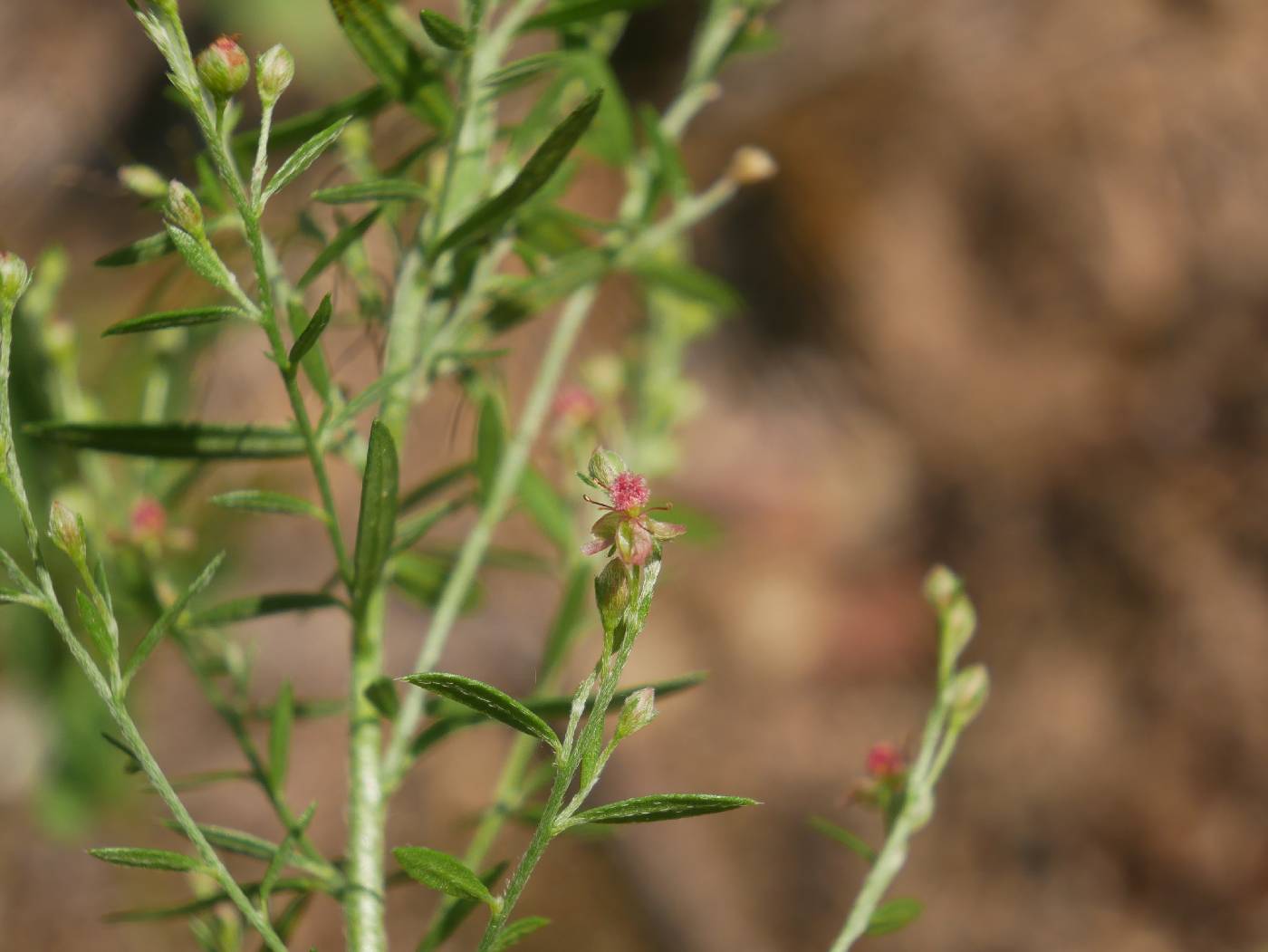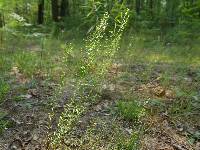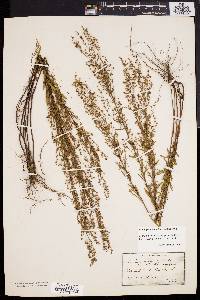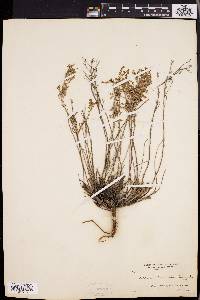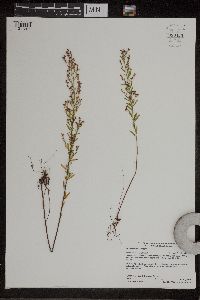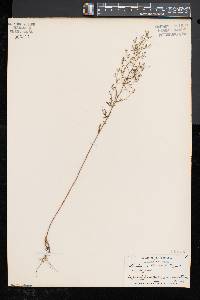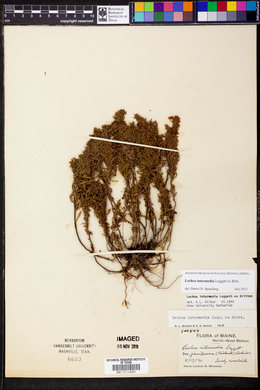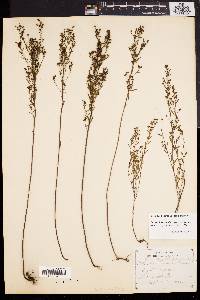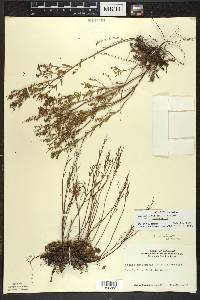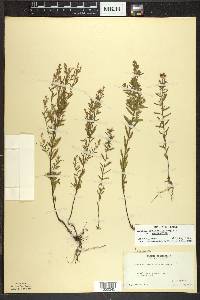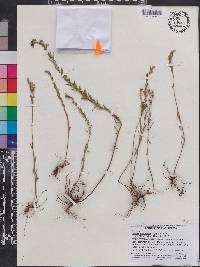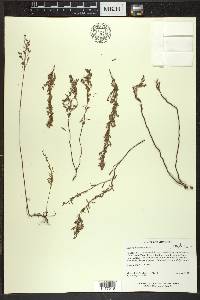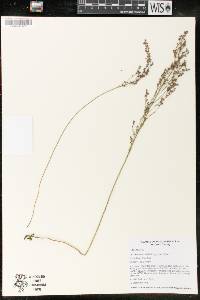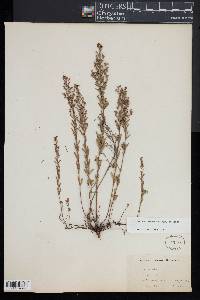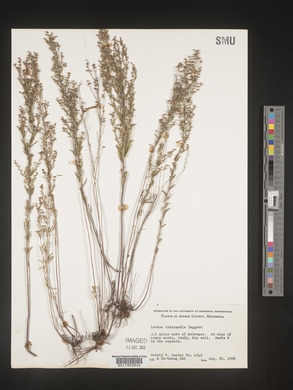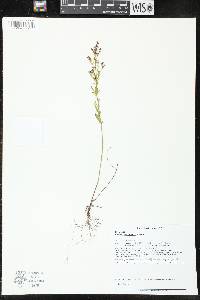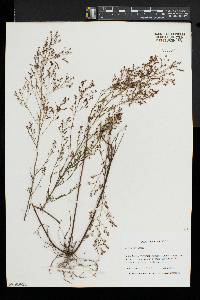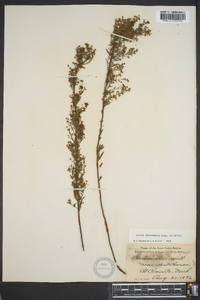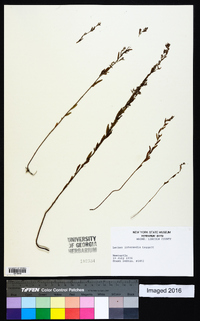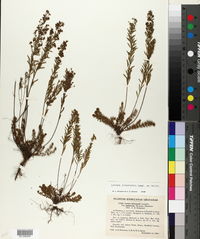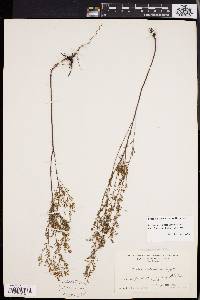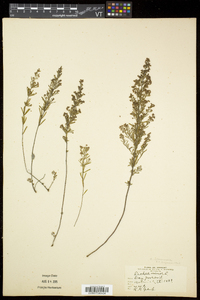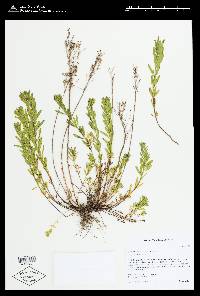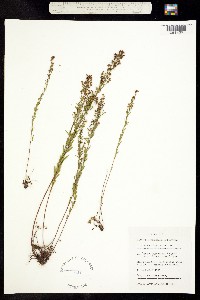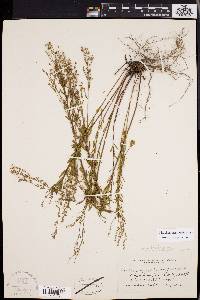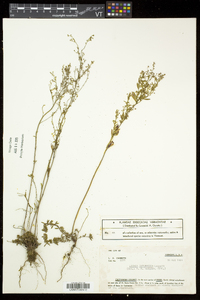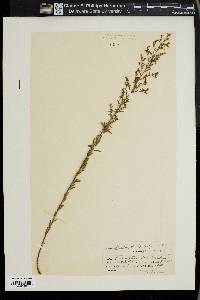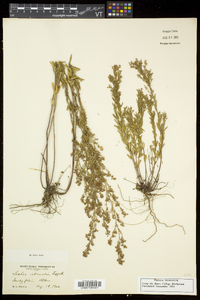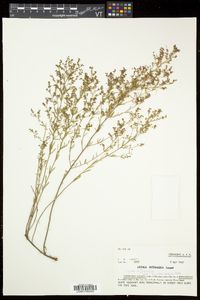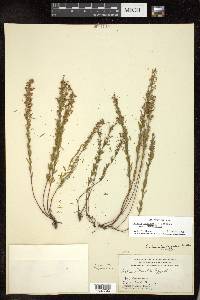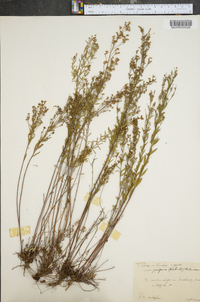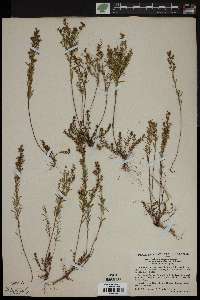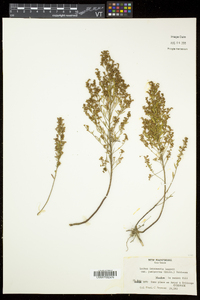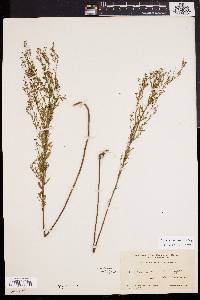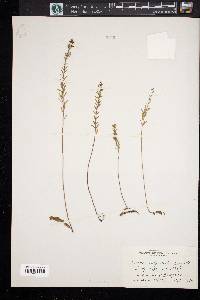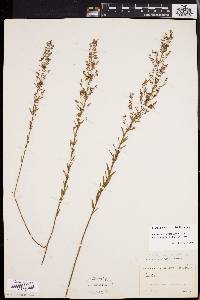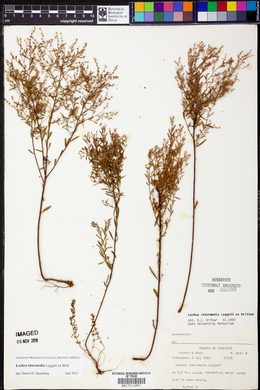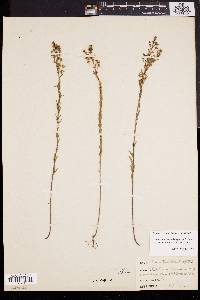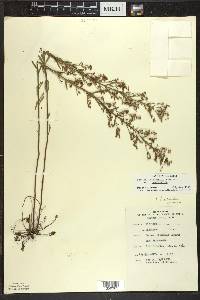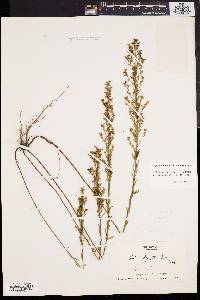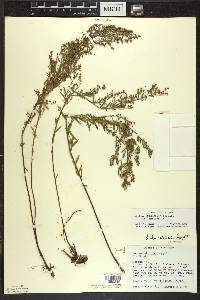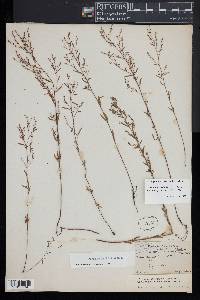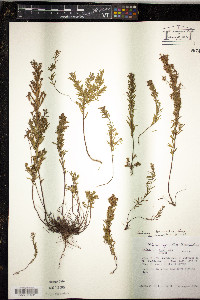
|
|
|
|
Family: Cistaceae
Round-Fruit Pinweed
|
Perennial herb 20 - 60 cm tall Stem: one to few, erect, unbranched below inflorescence, and thinly covered with appressed hairs. Late in the season producing somewhat ascending, basal shoots up to 7 cm long, with numerous, crowded leaves. Leaves: alternate, practically stalkless, green, non-toothed, one-nerved, small (1 - 2.5 cm long), narrow (to 5 mm wide), longer than wide, widest past middle, but almost linear with pointed tips, and hairless above, but sometimes with a few hairs on underside along midrib and edges. The leaves on the later produced basal shoots differ from the upright stem leaves by being more numerous, only 3 - 7 mm long, up to 2 mm wide, oblong to lance-shaped or narrowly elliptic, and sometimes sparsely long-hairy on the underside along the midrib and edges. Inflorescence: starting about midway or in upper third of stem, narrowly cylindric in outline, with leafy, up to 5 cm long, somewhat ascending lateral branches. The lateral inflorescence branches end in short, crowded, spike-like clusters of short-stalked, tiny (under 3 mm tall), reddish, non-showy, radially symmetric flowers. Sepals: five, but in two series, with outer two linear and only about one-half to three-quarters as long as the 2 mm tall, 1.9 - 2.1 mm wide, three-nerved, broadly egg-shaped or almost round inner three. All five sepals are longer than the petals, and covered with appressed hairs. Petals: three, mostly concealed by sepals, reddish, small, and rarely expanding. Stamens: typically five to twenty, with short anthers on relatively long, slender filaments. Pistil: with one, single-chambered, superior ovary; no style; but three, feather-like stigmas. Fruit: single-chambered, three-valved, shiny, about 2 mm tall and wide, almost spherical capsules which are partly enclosed by the persistent sepals, and sit on up to 3 mm long stalks. The capsules are just slightly taller than the sepals, so the very tip of the capsule is barely exposed above the sepal tips. Seeds: four to six per capsule, pale brownish, 1.1 - 1.2 mm long, wedge-shaped, with a wrinkled, shiny, whitish gray membrane or covering, and released when top of capsule opens down the three lengthwise valves. Similar species: Lechea intermedia is very similar to both L. stricta and L. pulchella var. moniliformis, except neither of those taxa have a wrinkled, shiny, whitish gray membrane covering their seeds. L. stricta further differs by being much more gray in overall color due to the very dense covering of matted white hairs on the leaves, stem, and inflorescence branches. The brownish, hardened, pointed tips on the leaves of the basal shoots in L. pulchella var. moniliformis further distinguish it from this species. Lechea racemulosa could be confused with this species, but its capsules are narrower (only to 1.2 mm wide), and in fruit the sepals become hard, shiny and yellowish at their very base. Flowering: July to October Habitat and ecology: Incredibly rare, in sandy soil of woods or savannas in the western part of the Chicago Region. Occurence in the Chicago region: native Notes: To our knowledge, no collections of this species have been made in the Chicago Region for over thirty years. Prior to those most recent collections in the 1970's, it had not been seen for decades. Possibly now extinct in the Chicago Region, L. intermedia tends to be more common in more northern regions. Etymology: Lechea is named after John Leche (1704 - 1764), a Swedish botanist. Intermedia means intermediate. Author: The Field Museum Stem 2-6 dm, thinly appressed-hairy; lvs of basal shoots oblong- lanceolate to narrowly elliptic, 3-7 mm, sparsely pilose on the midrib and margin beneath, or glabrous; cauline lvs linear-oblong, with a few hairs on the midrib beneath, or glabrous; panicle occupying a third or half the plant, narrowly cylindric, the lateral branches seldom over 5 cm; pedicels equaling or surpassing the sep; cal subglobose, with obtuse to abruptly rounded base; outer sep short; fr subglobose to slightly ovoid or obovoid, barely exceeding the sep; seeds 4-6, shaped like a section of an orange, pale brown, partly and irregularly invested with a gray membrane. Dry, sterile or sandy soil; Cape Breton I. to Ont. and Minn., s. to Pa., O., Ill., and in the mts. to Va.; also Nebr., N.D., and Sask. (L. juniperina) Gleason, Henry A. & Cronquist, Arthur J. 1991. Manual of vascular plants of northeastern United States and adjacent Canada. lxxv + 910 pp. ©The New York Botanical Garden. All rights reserved. Used by permission. |

